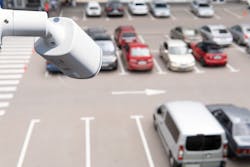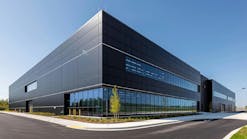Back in 1999, I was working at Axis Communications when the first IP camera was introduced. No one could predict where this new technology would lead at that time. The internet was still in its early days, and the primary use case for customers was website attraction. However, over the next few years, the security industry experienced a significant technological shift from analog CCTV cameras to IP-based cameras for video surveillance. This transition brought about a time of great growth and opportunity for manufacturers and integrators who embraced the new technology. Unfortunately, those who were unwilling to adapt to the change faced many challenges during this period.
Fast forward to today, and another industry, Parking, is also in the midst of a technology transition. It wasn’t that long ago that you paid cash to an attendant to park your car in a garage or surface lot. As an owner, you were lucky if the attendants didn’t completely rob you blind—no one considered utilizing the data from your parking operation to improve your customer experience and bottom line.
The parking industry is evolving quickly, moving away from traditional hardware to software, video, and analytics solutions. This shift is driven by the customer's need for more advanced analytics to effectively manage their parking assets and business. Additionally, changes in mobility, such as cities becoming more citizen-centric and the rise of autonomous driving, as well as the impact of a post-COVID workplace environment, where hybrid work is becoming more common, are also contributing to this change.As part of the technology shift, parking and security industries are increasingly converging, which will accelerate in 2023. This convergence is due to the rapid advancement and widespread adoption of License Plate Recognition (LPR) technology and video surveillance.
License Plate Recognition technology has revolutionized how parking is managed in public and private settings. Traditional parking access control systems that rely on physical permits or RFID tags are being replaced or complemented by LPR systems. With LPR, vehicles can enter and exit parking facilities seamlessly, eliminating the need for physical tickets or access cards. This enhances the overall user experience, reduces congestion at entry, and exit points.
Additionally, video surveillance solutions enable real-time monitoring of parking spaces, allowing operators to manage occupancy levels and enforce parking regulations efficiently. Technology can detect overstays, unauthorized vehicles, or vehicles that have exceeded their allotted time, thus minimizing parking violations and improving space utilization. This convergence has made parking facilities more efficient, secure, and user-friendly. Not to mention more profitable for the facility owner.
Challenges and Opportunities
Parking areas, including garages, lots, and structures, present unique security challenges due to their vulnerability to theft, vandalism, and various safety concerns. Traditional security systems like access control and alarm systems are needed to address the growing complexities of parking security. Integrating video surveillance solutions with advanced analytics and real-time monitoring capabilities offers a more comprehensive approach to enhance safety, deter crime, and mitigate risks in parking facilities.
Security Integrators can take advantage of the opportunity to expand their services into the parking market. Customers require increased security and improved data to manage the complexities of modern parking facilities better. Video surveillance is crucial in achieving this. Many security integrators already provide their customers with access control, intercom systems, gates, and fences, ID systems, video surveillance, and video analytics solutions. By offering parking solutions, they can become more valuable partners to their clients, increase their revenue, and gain a larger market share in their local area.
The Power of Video Surveillance: Video surveillance technology has evolved significantly, providing security integrators with various innovative tools to monitor parking areas effectively. High-definition cameras, intelligent video analytics, license plate recognition (LPR) systems, and video management software (VMS) enable real-time monitoring, proactive threat detection, and efficient incident response. These advancements empower security personnel to identify suspicious activities, track vehicles, investigate incidents, and ensure parking facilities' overall security and efficiency.
Enhanced Security and Safety Measures: By integrating video surveillance systems into parking facilities, security integrators can enhance security and safety measures in various ways. Live video feeds and recorded footage enable monitoring personnel to quickly identify and respond to security incidents such as car theft, hit-and-runs, or suspicious behavior. The presence of visible cameras is a deterrent, reducing the likelihood of criminal activity. Additionally, video analytics can detect unauthorized access, loitering, or overcrowding, allowing security personnel to act immediately.
Parking Guidance and Management: Beyond security, video integration can provide valuable insights for parking guidance and management. By analyzing video feeds and parking data, security integrators can develop intelligent systems that direct drivers to available parking spaces, optimize traffic flow, and improve overall efficiency. Real-time occupancy information and parking guidance signage can help reduce congestion and enhance the customer experience, making parking facilities more user-friendly and appealing to businesses and visitors.
Integration and Scalability: One of the critical advantages for security integrators entering the parking market is the ease of integrating video surveillance solutions with existing security infrastructure. By leveraging open-platform systems and standard protocols, integrators can seamlessly integrate video surveillance with access control systems, alarms, and other security devices. This integration allows for centralized management and control, enabling efficient monitoring and coordination of security operations. Many parking integrators don’t have the experience or knowledge to integrate parking technologies into existing security systems.
Revenue Generation and Long-Term Growth: Expanding into the parking market presents security integrators with substantial revenue opportunities. Parking facilities across various sectors, including commercial buildings, shopping malls, airports, and hospitals, increasingly recognize the importance of robust security measures. By offering comprehensive video surveillance solutions tailored to parking needs, integrators can establish long-term partnerships, generate recurring revenue through maintenance contracts, and tap into the expanding market for security services in the parking industry.
While the convergence of the parking and security industries presents many opportunities, it also presents many challenges. One of the critical challenges is the need for interoperability between different systems. As LPR technology becomes more widely adopted, it is essential that different systems are able to communicate with each other. This will require the development of common standards and protocols.
Another challenge is the need for privacy and data protection. LPR technology collects sensitive data, such as license plate numbers, and protecting this data from unauthorized access is essential. This will require the development of robust security measures and data protection policies.
Conclusion
Due to the increasing demand for better security in parking areas, video surveillance technology has become a necessity. This change provides an excellent opportunity for security integrators to expand their services and enter the profitable parking market. By utilizing video surveillance and advanced analytics, security integrators can offer comprehensive security solutions, enhance parking management, and establish themselves as reliable partners with their customers in the evolving parking industry. Embracing this opportunity will generate revenue growth and create safer and more secure parking environments for businesses and visitors.




